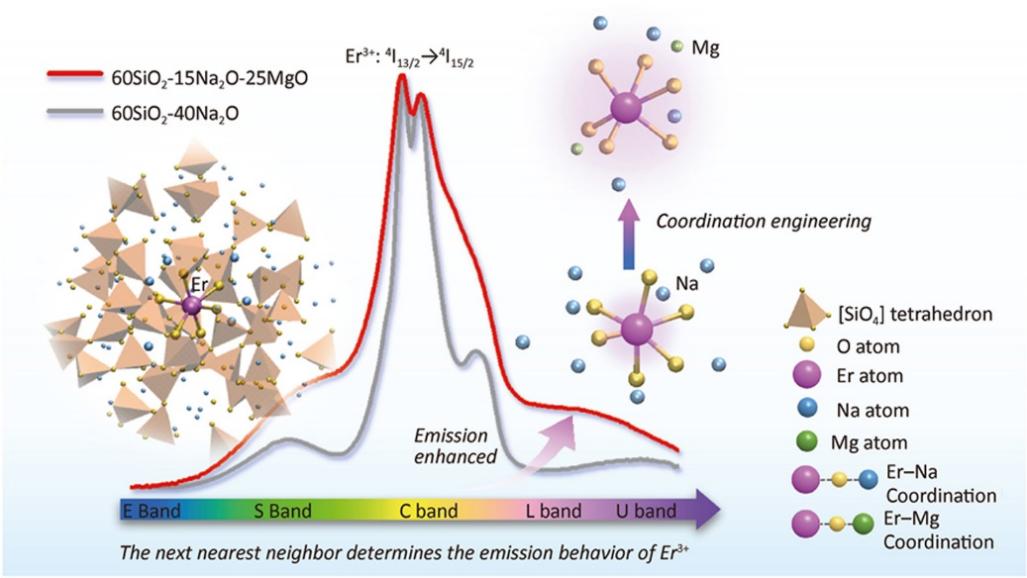
Coordination Engineering Regulates Emission in Er doped Silicate Glasses and Optical Fibers
The L-band (1565–1625 nm) Er-doped fiber laser light source holds significant application prospects in next-generation optical communications, wind lidar, gas sensing, and quantum communications. However, the development of high-gain Er-doped fibers for the L-band still faces challenges: the emission cross-section (σe) of Er³⁺ ions at wavelengths beyond 1590 nm is relatively low, limiting their gain performance. In existing silica fiber solutions, high phosphorus doping can enhance L-band gain, but the volatilization of high-concentration phosphorus during high-temperature fabrication leads to reduced longitudinal uniformity and yield, increasing the cost and difficulty of this approach. Multicomponent silicate glasses, with their broad compositional tunability, high rare-earth ion doping concentrations, and wide spectral adjustment range, offer significant potential for spectral optimization in the L-band. However, the luminescence regulation mechanism of Er³⁺ ions in such glasses has rarely been reported.
Most recently, a research team led by Shanghai Institute of Optics and Fine Mechanics, Chinese Academy of Sciences, has made an important breakthrough, and proposed a new scheme for regulating the emission properties of Er doped silicate glasses and fibers based on coordination engineering. The study, entitled “Regulating emission in Er doped silicate glass and fiber via coordination engineering” was published in Journal of Materiomics on April 1, 2025.
The research team, for the first time, proposed an effective ionic field strength model (σe1600=‒19+116.9E, R2=92.3%) based on X-ray absorption fine structure (XAFS) spectroscopy and molecular dynamics (MD) simulations, elucidating the synergistic mechanism between the ionic field strength and coordination number of next-nearest-neighbor network modifiers.
Furthermore, guided by this mechanism, they fabricated an Er-doped silicate fiber with a 1.5-fold increase in emission cross-section, achieving a 5–13 dB gain enhancement in the L-band. The fiber exhibits a high gain coefficient (4.7 dB/m@1625 nm), a low noise figure (NF = 6.4 dB), and excellent gain flatness (0.8 dB, surpassing commercial fibers), demonstrating the feasibility of translating glass spectral regulation into fiber gain improvement.
This study provides a comprehensive solution for L-band fiber gain medium design—from local structural analysis to cross-scale performance validation. Through precise composition-structure-performance regulation in multicomponent glasses, it establishes a theoretical and experimental foundation for high-gain fiber materials in next-generation optical communications, radar detection, and related fields.
This work was supported by National Natural Science Foundation of China.

Local structure and spectra of Er3+ ions in silicate glasses. (Image by SIOM)
Article website: https://doi.org/10.1016/j.jmat.2025.101057
Contact: LI Yuqing
Advanced Laser and Optoelectronic Functional Materials Department,
Shanghai Institute of Optics and Fine Mechanics, CAS
Email: 990326356@qq.com